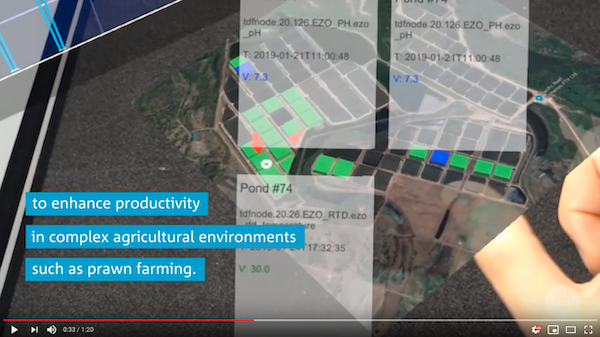Augmented Reality (AR) is rapidly growing as a means of providing information and learning experiences. AR provides an interactive experience where real world experiences are enhanced by computer generated information, that can target any human sense e.g. visual, auditory, sense of touch or smell.
It is an Immersive Technology, through which the physical world is altered through digitally generated experiences. The difference with Virtual Reality (VR) is that in VR rather than the physical world being augmented, it is actually totally replaced with a virtual one.
AR is a very mature technology in industries such as health, aerospace and the military and it is being brought into agricultural settings, where its potential is being quickly realised.
In agriculture, AR technology is being used in education and training and also in the monitoring and providing of information on farm resources.
A good example is where Australia’s Commonwealth Scientific and Industrial Research Organisation (CSIRO) have described how they are using the technology from gaming platforms, sensor technologies and next generation data interaction techniques to assist prawn farmers with real time information that can greatly assist them make important management decisions in relation to water quality.
CSIRO have started with the prawn industry, but plan to expand into other sectors, as they believe all types of farming is becoming increasingly dependent on gathering and interpreting data, captured by sensor technologies.

CSIRO’s Data 61 is its Immersive Environments Lab for applied research into augmented reality, virtual reality and 3D Web Technologies. CSIRO predict that:
“Agriculture of the future will be digitally integrated at all stages of production, from understanding genetics to transport logistics. We are using our expertise in digital innovation and agriculture to improve decision making for farmers, agribusiness, policy-makers and researchers.”
The work CSIRO are doing in digital agriculture can be found here.
Another good example is with Case IH and their work with the Microsoft Hololens, which demonstrates how augmented reality can help in education, training and diagnostics:
This video featuring Tim Gentle from Think Digital gives a good introduction to Augmented Reality from his presentation at an extensionAUS Bootcamp training event:
FarmAR app is an example of how farmers can build AR applications for their farms by having their base maps regularly updated, which gives an indication of changes in vegetation and soil health. It also provides the means to add notes and photos to specific locations on the farm.
Further Information
extensionAUS Webinar on Augmented Reality and the opportunity it presents for immersive learning by Mark Hillebrand from Appearition
